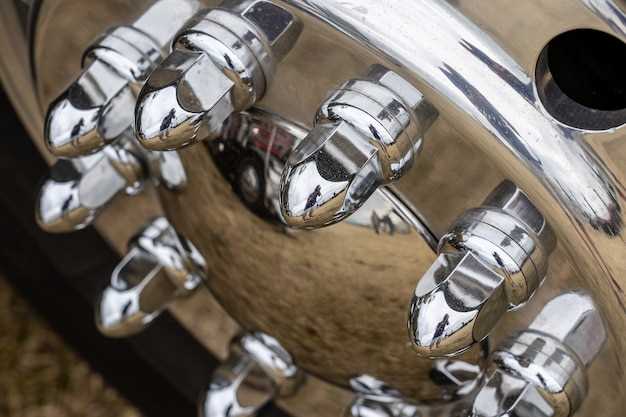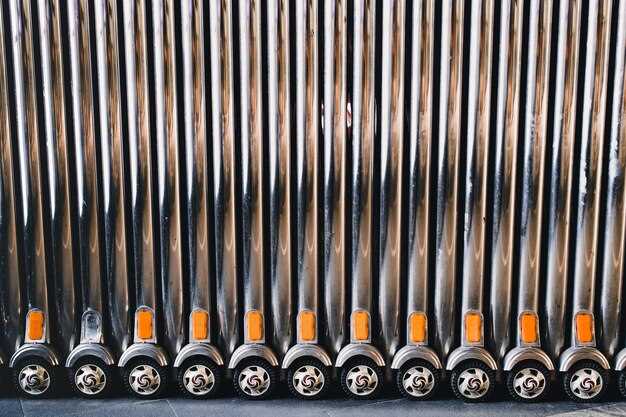
Best Crankshafts for High Power Applications
- George Harris
- 0
- Posted on

In the world of automotive engineering, a crankshaft is more than just a component; it is the heartbeat of the engine. Its primary role is to convert the linear motion of the pistons into rotational motion, which ultimately powers the vehicle. For performance enthusiasts and engineers alike, selecting the right crankshaft is critical for maximizing power output and ensuring reliability under high-stress conditions.
As engine technology advances, the demand for high-performance crankshafts has surged. A quality crankshaft can significantly enhance an engine’s efficiency, durability, and overall power. Key factors such as material composition, manufacturing precision, and design play pivotal roles in determining a crankshaft’s suitability for high-performance applications. In this article, we will explore some of the top crankshaft options available, emphasizing their features and benefits in achieving superior engine performance.
Whether you are building an engine from the ground up or upgrading an existing setup, understanding the nuances of crankshaft design and functionality is essential. We will delve into the top contenders in the market, highlighting their unique attributes and real-world performance metrics. From forged steel constructions to innovative counterweight designs, these crankshafts are engineered to withstand the rigors of high power applications while delivering exceptional torque and acceleration.
Key Materials Used in Performance Crankshaft Manufacturing
Performance crankshafts are crucial components in high output engines, and the selection of materials directly influences their strength, weight, and durability. The primary materials used in manufacturing these crankshafts include steel, forged steel, and aluminum, each offering distinct advantages.
Steel is a favored choice due to its robustness and ability to withstand high stress and temperatures. Within this category, various grades such as 4340 chrome-moly steel are commonly utilized. This alloy features enhanced toughness and resistance to fatigue, making it suitable for high-performance applications where durability is a priority.
Forged steel crankshafts are produced through a process that enhances the material’s internal structure. This results in increased strength and resistance to twisting, essential for engines that experience extreme conditions. Forging aligns the grain structure, contributing to improved performance, making forged steel a standard for many racing applications.
Aluminum crankshafts, while less common, are gaining traction for specific racing scenarios where weight reduction is crucial. They offer significant weight advantages, which can lead to improved engine responsiveness and overall performance. However, aluminum crankshafts are generally less durable compared to steel options and may be better suited for engines with lower stress loads.
In addition to the primary materials, specific coatings and surface treatments, such as nitriding, can enhance performance characteristics. Nitriding improves surface hardness and wear resistance, extending the crankshaft’s service life under harsh conditions.
Overall, the choice of material for performance crankshafts hinges on balancing weight, strength, and durability to meet the demands of high-power engines.
Understanding Crankshaft Design for Increased RPM and Longevity

The design of a crankshaft directly influences both the RPM capabilities and the longevity of an engine. Key factors include material selection, geometry, and weight distribution. High-performance crankshafts often utilize advanced materials such as forged steel or billet aluminum, which provide enhanced strength-to-weight ratios. These materials can withstand the increased stresses associated with higher RPMs, reducing the likelihood of fatigue failure.
Geometry is also crucial in crankshaft design. Journal and counterweight sizes must be optimized to balance engine dynamics and performance. A well-designed crankshaft minimizes vibrations, allowing for smoother operation at elevated RPMs. Additionally, the placement of counterweights affects rotational inertia, providing a balance that supports engine stability while maximizing RPM potential.
Weight distribution plays a significant role in the overall performance. A lighter crankshaft reduces the rotating mass, enabling quicker revs and improved throttle response. However, it is essential to maintain an optimal balance between lightweight designs and sufficient mass to dampen vibrations, which could lead to wear and increased operational noise over time.
Furthermore, surface treatments and finishes can enhance longevity. Processes such as nitriding or shot peening improve the surface hardness and fatigue resistance of crankshafts, enabling them to endure the stresses over prolonged use. Precise manufacturing tolerances also contribute to reduced friction and wear, extending the service life of the component.
Ultimately, a well-engineered crankshaft tailored for high RPM operation not only boosts performance but significantly enhances engine longevity, making it a critical focus for performance enthusiasts and engineers alike.
Choosing the Right Crankshaft for Your Specific Engine Setup

When selecting a crankshaft for your engine, several factors must be considered to ensure optimal performance. The right crankshaft not only influences the engine’s power output but also affects its reliability and overall responsiveness.
1. Engine Configuration: The first step in choosing the appropriate crankshaft is to understand the configuration of your engine. Inline, V-type, and flat engines each have unique requirements. For instance, a V8 engine may require a crankshaft with a different stroke length and journal size compared to an inline-four engine.
2. Material Consideration: Crankshafts can be made from various materials, including cast iron, forged steel, and billet steel. Forged or billet options are typically preferred for high-performance applications due to their strength and durability under extreme conditions. Cast iron, while often more affordable, may not provide the same level of performance enhancement.
3. Stroke and Bore Ratio: The stroke length affects the engine’s displacement and power potential. A longer stroke can increase torque but may limit high RPM capabilities. Therefore, it’s crucial to balance the stroke with the bore size to suit your specific performance goals.
4. Weight: The weight of the crankshaft plays a vital role in engine responsiveness. A lighter crankshaft can improve throttle response and limit rotational inertia, especially in applications requiring quick acceleration. However, it’s essential to ensure that the crankshaft maintains sufficient strength for the application.
5. Balanced and Unbalanced Crankshafts: Determining whether to use a balanced or unbalanced crankshaft is critical. A balanced crankshaft reduces engine vibrations, which can lead to increased longevity and smoother operation. It’s often recommended for high-performance engines subjected to greater stress.
6. Application-Specific Needs: Consider the intended use of your engine. A street-performance engine will have different crankshaft requirements compared to a dedicated racing setup. Factors such as boost levels, RPM range, and drivetrain characteristics will significantly influence the crankshaft choice.
7. Compatibility: Lastly, ensure that the crankshaft is compatible with other engine components, including pistons, connecting rods, and camshafts. Mismatched components can lead to decreased performance or even engine failure.
Choosing the right crankshaft involves thorough consideration of your engine’s configuration, material, stroke, weight, balance, application needs, and overall compatibility. A well-selected crankshaft will enhance performance and contribute to a reliable, high-powered engine setup.
